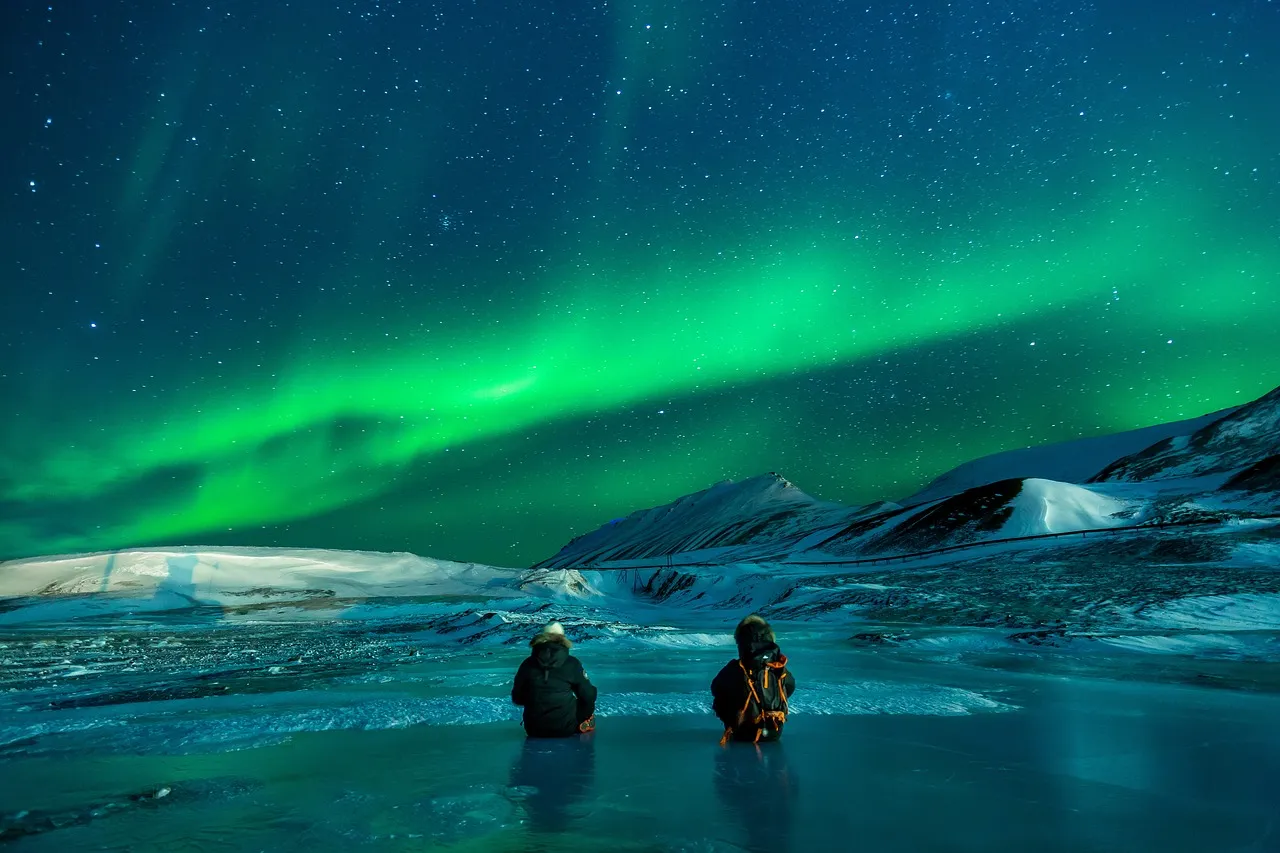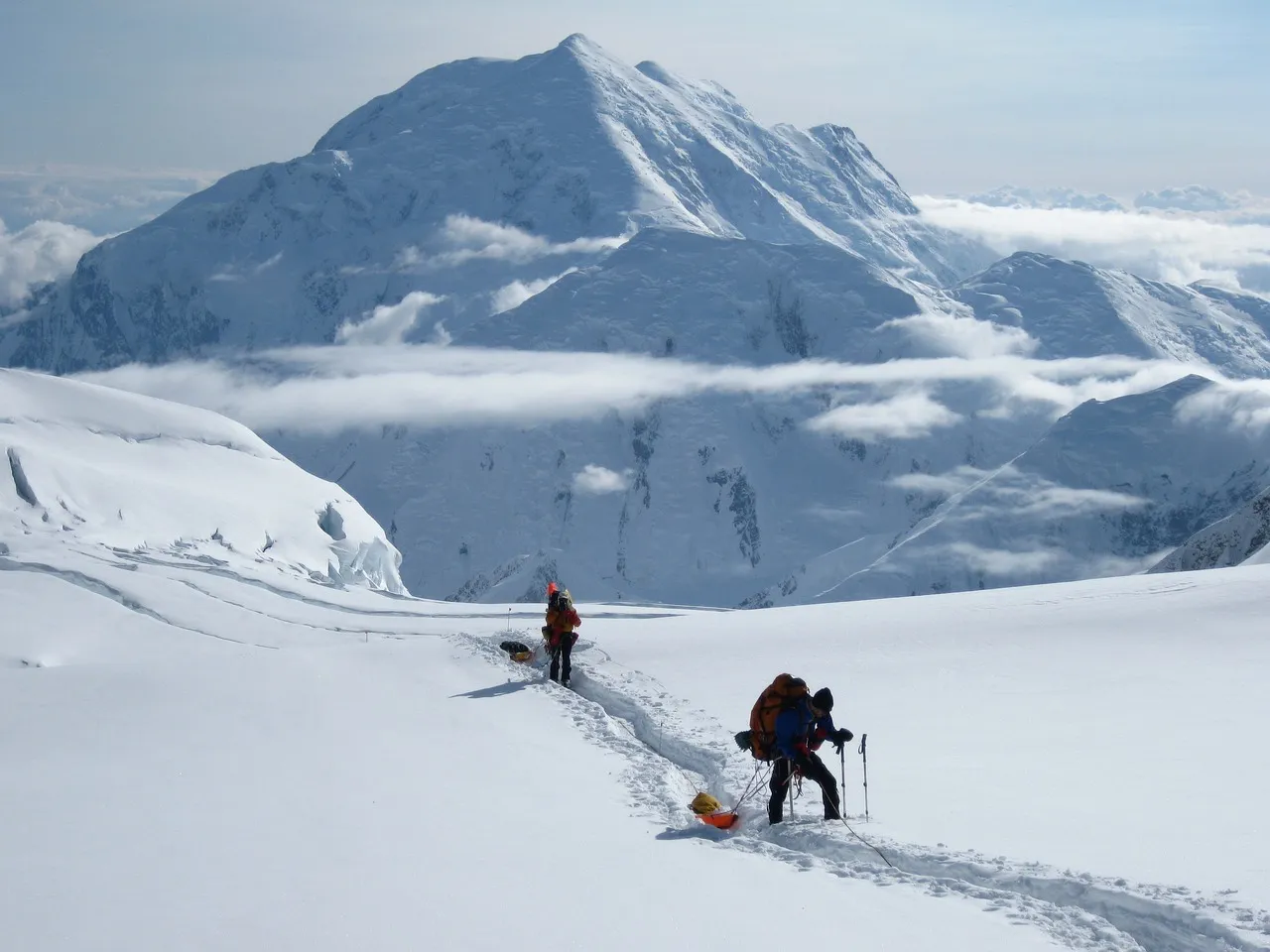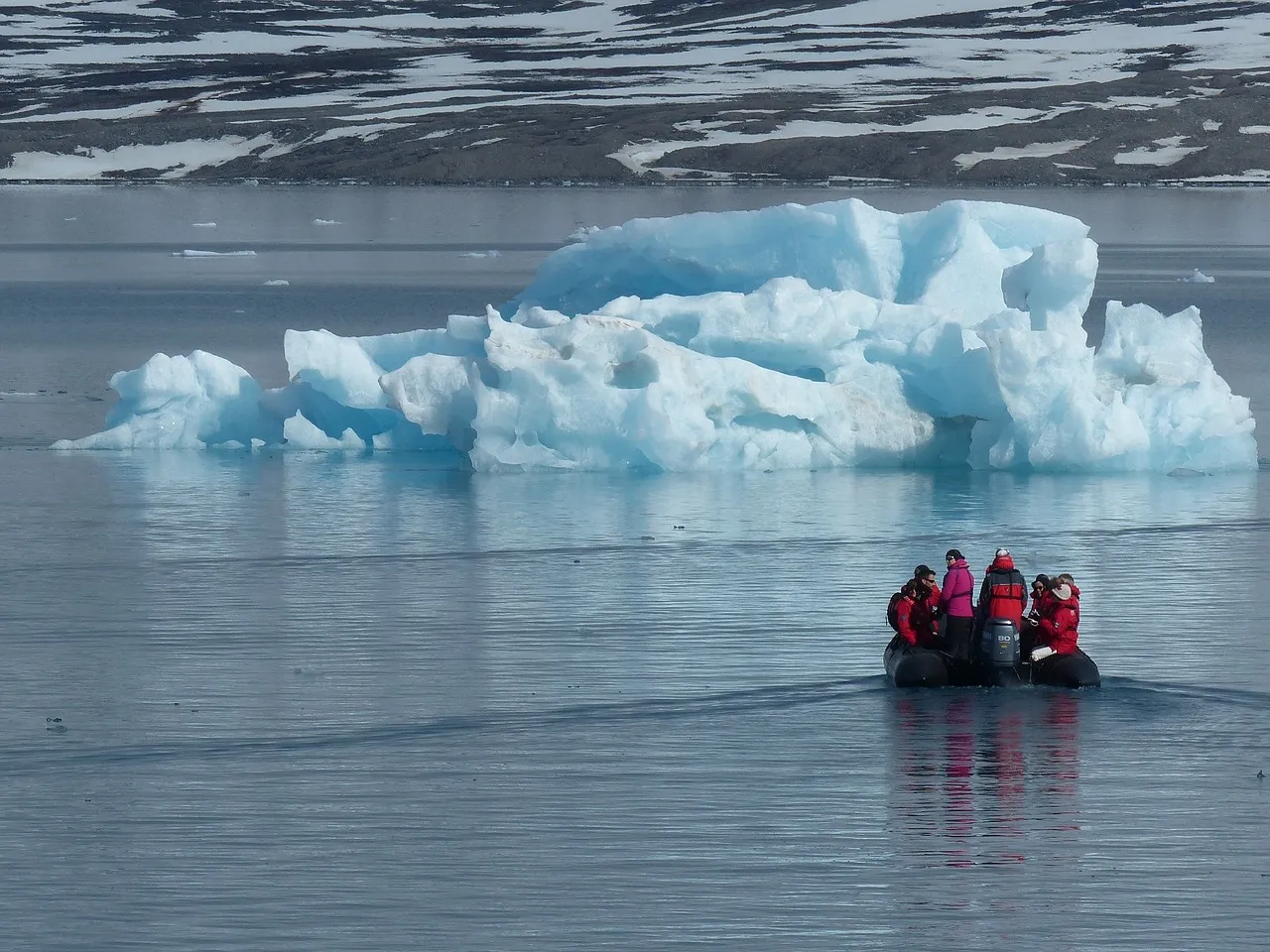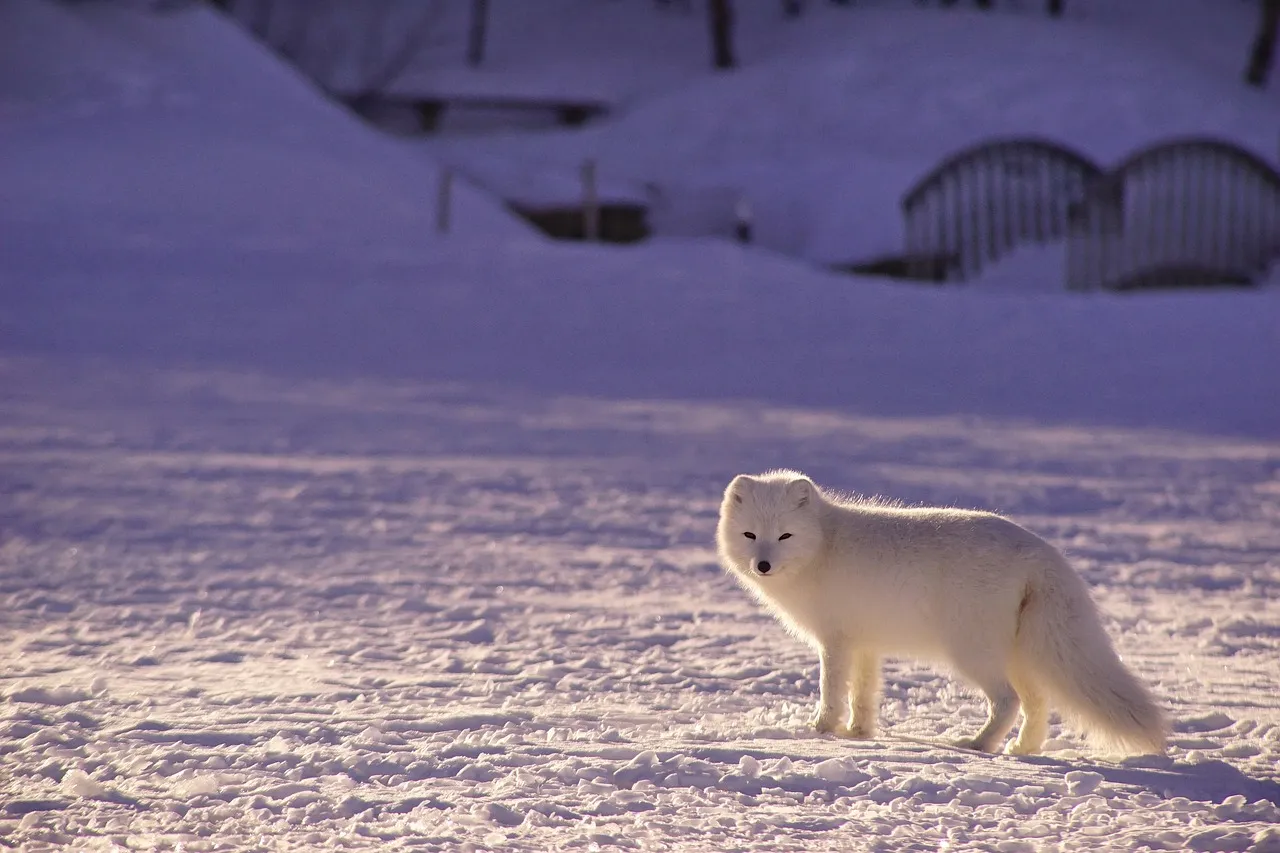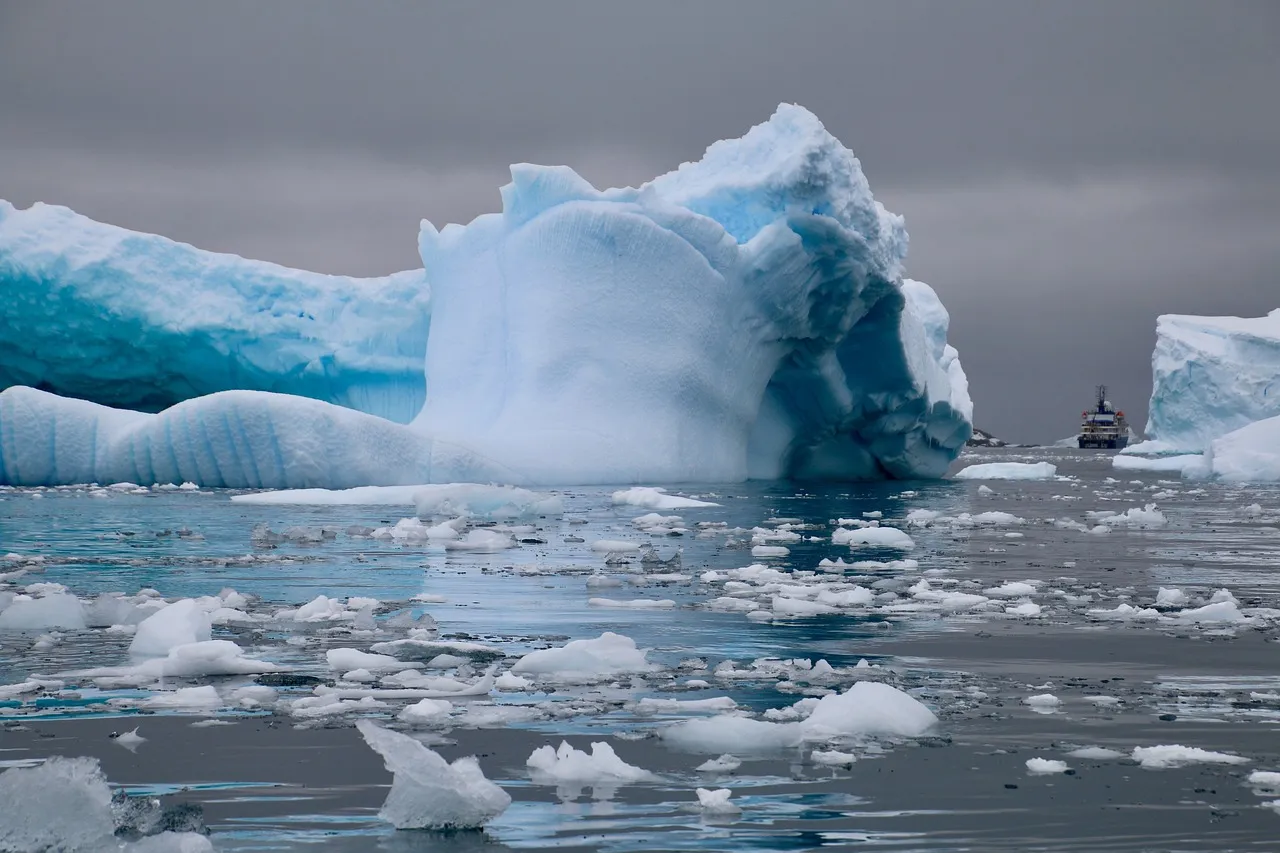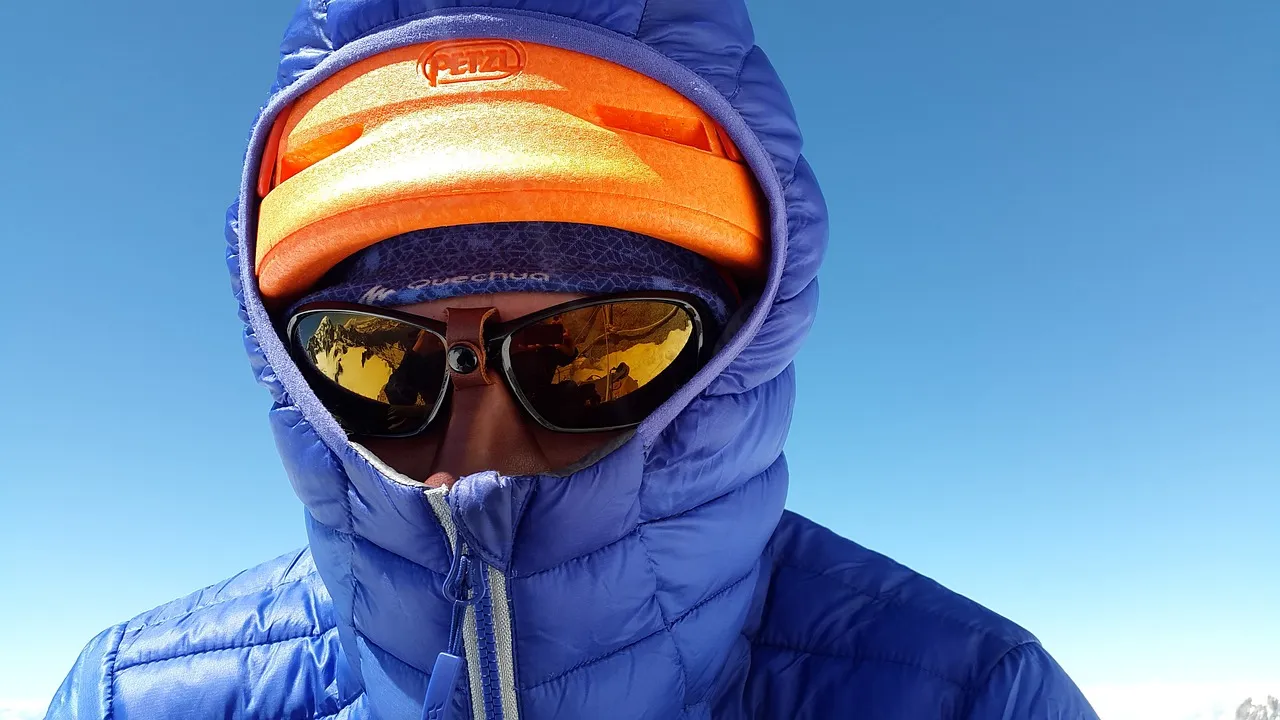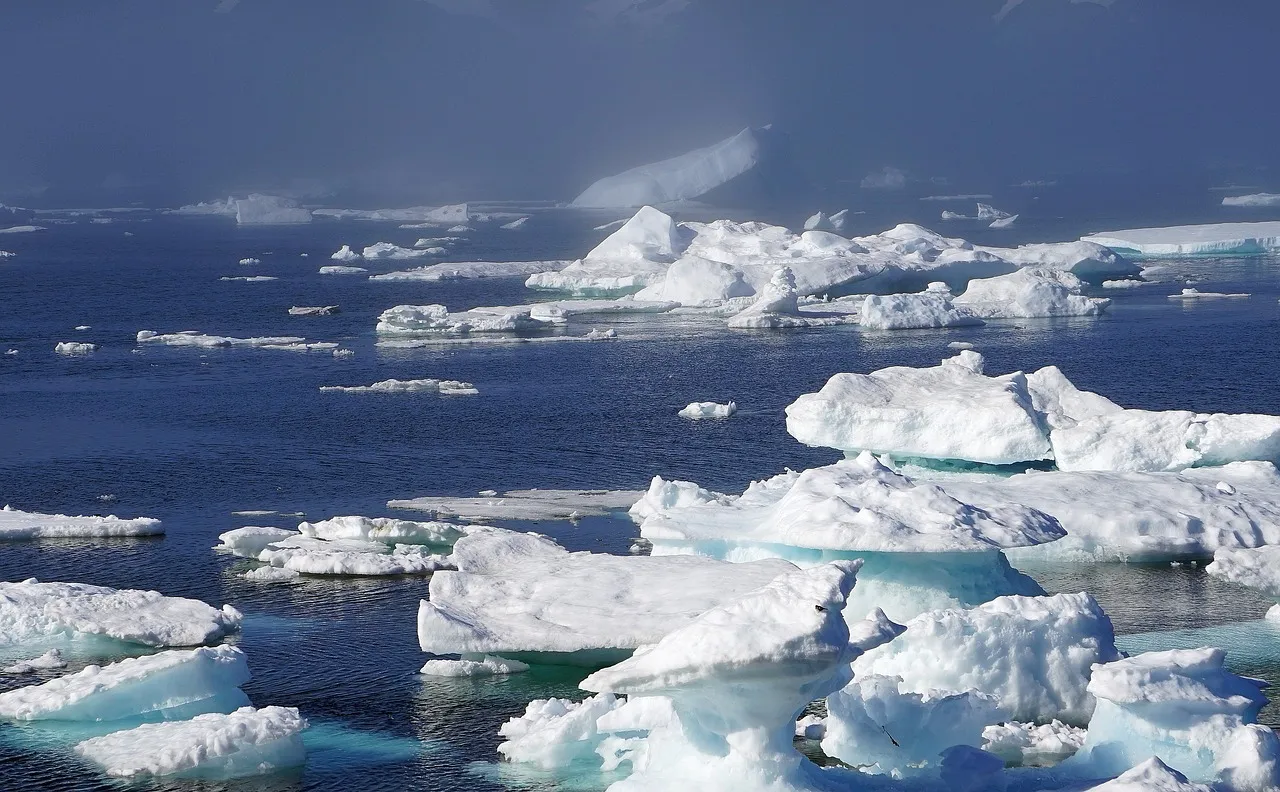Embarking on a polar regions adventure is not merely a journey; it’s an immersion into the world’s most extreme and pristine wilderness. The polar regions, encompassing the Arctic and Antarctic, offer intrepid travelers a chance to witness nature’s grandeur in its purest form. In this exploration, we delve into the unparalleled experiences awaiting those who dare to venture into the polar extremes.
Polar Regions Adventure
1. The Arctic Wonderland:
The Arctic, with its vast icy landscapes and unique wildlife, beckons adventurers with promises of breathtaking scenery and unparalleled encounters. From the mesmerizing Northern Lights dancing across the night sky to the vast expanses of sea ice, the Arctic is a wonderland for those seeking a polar adventure. Svalbard, Greenland, and the Canadian Arctic Archipelago are among the destinations that reveal the Arctic’s raw beauty.
2. Antarctic Majesty:
The Antarctic, a vast icy continent at the southernmost tip of the Earth, offers a stark and majestic landscape that few have witnessed. Towering icebergs, colossal glaciers, and a pristine wilderness inhabited by penguins, seals, and whales characterize this unspoiled realm. Setting foot on the Antarctic Peninsula or exploring the sub-Antarctic islands is an adventure that transcends the ordinary, providing a profound connection to the planet’s last true wilderness.
3. Polar Wildlife Encounters:
One of the most captivating aspects of a polar regions adventure is the chance to encounter unique wildlife in their natural habitats. In the Arctic, witness polar bears roaming the sea ice, observe majestic reindeer in Svalbard, and marvel at the resilience of Arctic foxes. In the Antarctic, penguin colonies dot the landscape, seals bask on ice floes, and whales breach the frigid waters. These encounters offer a glimpse into the remarkable adaptations that allow life to thrive in extreme conditions.
4. Iceberg Exploration:
Navigating through a sea of towering icebergs is a surreal experience that defines a polar adventure. In both the Arctic and Antarctic, these colossal chunks of ice take on fantastical shapes and colors, creating a dynamic and ever-changing landscape. Kayak through icy channels, cruise alongside majestic ice formations, and witness the sheer magnitude of nature’s sculptural artistry.
5. Northern Lights Spectacle:
A journey to the Arctic during the winter months holds the promise of witnessing the enchanting Northern Lights, or Aurora Borealis. The dance of vibrant colors across the Arctic night sky is a celestial spectacle that captivates the soul. Tromsø in Norway, Fairbanks in Alaska, and Yellowknife in Canada are renowned for providing optimal viewing conditions, creating a magical backdrop for a polar adventure.
6. Expedition Cruises:
Exploring the polar regions often involves embarking on expedition cruises that offer a unique blend of comfort and adventure. Specially designed vessels navigate icy waters, providing access to remote areas and ensuring a front-row seat to nature’s grand theater. Expedition cruises facilitate close encounters with wildlife, shore landings for exploration, and expert-led lectures to deepen the understanding of the polar ecosystems.
7. Polar Diving:
For the adventurous souls seeking a truly immersive experience, polar diving offers a unique perspective on the underwater world beneath the ice. Dive into frigid waters surrounded by ice formations and witness the extraordinary marine life that thrives in these extreme conditions. Antarctica’s crystal-clear waters provide a surreal underwater playground for those willing to brave the cold.
8. Dog Sledding Adventures:
In the Arctic, particularly in regions like Greenland and Svalbard, dog sledding is a traditional and exhilarating mode of transportation. Glide across frozen landscapes pulled by a team of huskies, immersing yourself in the ancient Arctic tradition of dog sledding. The rhythmic sounds of paws on snow and the crisp Arctic air create an unforgettable and authentic polar experience.
9. Scientific Exploration:
The polar regions serve as living laboratories for scientific research, and adventurous travelers can participate in educational expeditions. Join scientists in studying polar ecosystems, contribute to climate research, and gain a deeper understanding of the environmental challenges these regions face. Experiencing firsthand the importance of conservation efforts adds a meaningful layer to the polar adventure.
10. Midnight Sun and Polar Night:
In the polar regions, the phenomenon of the midnight sun during summer and the polar night during winter adds a surreal dimension to the adventure. Witness 24-hour daylight in the Arctic summer, providing endless opportunities for exploration. Conversely, experience the mystique of the polar night, where the sun remains below the horizon, casting the landscape in a serene and otherworldly darkness.
A polar regions adventure transcends the ordinary and offers a journey into the extremes of our planet. Whether it’s the Arctic’s enchanting landscapes or the Antarctic’s pristine wilderness, the polar regions beckon those who seek unparalleled natural beauty and the thrill of exploration. From wildlife encounters to iceberg exploration and scientific immersion, a polar adventure is an odyssey that etches indelible memories, leaving travelers forever connected to the awe-inspiring wonders of the polar extremes.
Arctic and Antarctic expeditions
Embarking on Arctic and Antarctic expeditions is the epitome of exploration, offering intrepid adventurers a chance to witness the extremes of our planet. These polar regions, the Arctic in the northern hemisphere and the Antarctic in the southern hemisphere, present unique challenges and unparalleled beauty. In this exploration, we delve into the captivating world of polar expeditions, each offering a distinct experience at opposite ends of the Earth.
1. Arctic Expeditions: The Icy Playground of the North
The Arctic, a vast expanse of icy wilderness, is a playground for those seeking a unique blend of natural beauty and adventure. Arctic expeditions typically focus on regions like Svalbard, Greenland, and the Canadian Arctic Archipelago. Visitors to the Arctic can witness iconic polar bears roaming the sea ice, navigate through towering icebergs, and experience the mystical dance of the Northern Lights.
2. Antarctic Expeditions: A Pristine Southern Wilderness
At the opposite end of the Earth lies Antarctica, an untouched wilderness of ice and snow. Antarctic expeditions take travelers to the remote Antarctic Peninsula and sub-Antarctic islands. Here, colossal icebergs, vast glaciers, and thriving wildlife, including penguins and seals, create a mesmerizing backdrop. The sheer isolation and untouched landscapes make Antarctic expeditions an awe-inspiring journey into the heart of the frozen south.
3. The Arctic: Wildlife Encounters in a Frozen Realm
Arctic expeditions offer unique opportunities for wildlife encounters, showcasing the resilience of life in extreme conditions. Polar bears, adapted to the sea ice, are a highlight, along with reindeer, Arctic foxes, and a myriad of seabirds. Expedition cruises navigate through icy channels, providing close-up views of marine life, including seals and whales, creating a wildlife spectacle against the Arctic’s stark beauty.
4. The Antarctic: Penguin Parades and Marine Marvels
Antarctic expeditions are a feast for wildlife enthusiasts, offering encounters with colonies of penguins, seals, and marine birds. Witness the iconic march of penguins on ice-covered shores, observe seals basking on ice floes, and marvel at whales breaching in the frigid waters. The Antarctic ecosystem, teeming with life, reveals the delicate balance that allows these creatures to thrive in one of the harshest environments on Earth.
5. Arctic: Iceberg Exploration and Glacial Marvels
Navigating through towering icebergs is a hallmark of Arctic expeditions, providing a surreal and ever-changing landscape. Cruising through icy waters, explorers witness colossal ice formations, each with its unique shape and color. Kayaking alongside these frozen giants or taking a Zodiac cruise through ice-filled channels allows for an intimate exploration of the Arctic’s icy wonders.
6. Antarctic: Glacial Grandeur and Frozen Majesty
Antarctic expeditions unveil the grandeur of glaciers and the majesty of the frozen continent. Massive icebergs and intricate ice formations dominate the Antarctic landscape, creating a visual symphony of white and blue. Hiking on glaciated terrains, exploring ice caves, and witnessing calving glaciers are experiences that redefine the meaning of frozen beauty in the southern hemisphere.
7. Arctic: Northern Lights Extravaganza
One of the Arctic’s most enchanting spectacles is the Northern Lights, or Aurora Borealis. Arctic expeditions during the winter months provide a front-row seat to this celestial dance of colors in the night sky. Locations like Tromsø in Norway, Fairbanks in Alaska, and Yellowknife in Canada offer optimal conditions for witnessing this natural light show, adding a magical touch to Arctic adventures.
8. Antarctic: Polar Night and Midnight Sun
In the Antarctic, the phenomenon of polar night and midnight sun adds a unique dimension to expeditions. During the polar night, the sun remains below the horizon, casting the landscape in serene darkness. In contrast, the Antarctic summer experiences the midnight sun, where daylight persists for 24 hours. These phenomena create a surreal ambiance, providing a profound connection to the rhythms of the polar environment.
9. Arctic: Dog Sledding Traditions and Cultural Encounters
Arctic expeditions often include immersive experiences in local traditions, such as dog sledding. In regions like Greenland and Svalbard, dog sledding is not only a means of transportation but also a cultural tradition deeply intertwined with the Arctic way of life. Travelers can engage with local communities, learn about traditional practices, and gain insights into the unique cultures thriving in the frozen north.
10. Antarctic: Scientific Exploration and Conservation Insights
Antarctic expeditions offer the opportunity to engage in scientific exploration and conservation efforts. Joining expert-led expeditions allows travelers to contribute to ongoing research, gaining insights into climate change, marine biology, and the delicate balance of the Antarctic ecosystem. These experiences add a layer of educational depth, fostering a greater understanding of the importance of preserving these pristine environments.
Arctic and Antarctic expeditions stand as testament to humanity’s capacity for exploration and appreciation of the Earth’s extremes. Each polar region offers a distinct set of wonders, from the wildlife-rich Arctic to the untouched majesty of Antarctica. Whether it’s witnessing polar bears on sea ice or navigating through iceberg-laden waters, embarking on a polar expedition promises an unforgettable journey into the heart of Earth’s icy realms.
Wildlife in polar regions
The polar regions, both the Arctic and Antarctic, are not only landscapes of ice and snow but also thriving ecosystems that host a remarkable array of wildlife. From iconic polar bears in the Arctic to charismatic penguins in the Antarctic, the polar fauna captivates and inspires those fortunate enough to witness these creatures in their natural habitats. In this exploration, we delve into the enchanting wildlife that graces the frozen realms of the Earth.
1. Arctic: Polar Bears, Masters of the Ice
The Arctic, with its vast expanses of sea ice, is synonymous with the mighty polar bear. These magnificent creatures are perfectly adapted to their icy surroundings, possessing powerful limbs for swimming and hunting seals. Arctic expeditions provide opportunities to witness polar bears in their natural habitat, whether prowling the sea ice in search of prey or relaxing with their cubs in snowy dens.
2. Antarctic: Penguins, Lords of the Southern Ice
No creature symbolizes the Antarctic quite like the penguin. Adélie, Emperor, Chinstrap, and Gentoo penguins are among the species that call the Antarctic home. These flightless birds exhibit incredible adaptations to life on the ice, with streamlined bodies for swimming and a keen sense of community. Antarctic expeditions offer mesmerizing encounters with penguin colonies, where the air is filled with the sounds of their playful calls.
3. Arctic: Majestic Marine Mammals
The Arctic’s frigid waters are home to an array of marine mammals, adding to the region’s biodiversity. Whales, including belugas, bowheads, and narwhals, navigate through icy channels, while seals such as ringed and bearded seals find refuge on ice floes. The sight of these majestic marine mammals is a testament to the resilience of life in one of the harshest environments on Earth.
4. Antarctic: Seals, Masters of the Frozen Seas
Antarctic waters, though icy, teem with life, and seals are a common sight along its shores. Weddell, Crabeater, and Leopard seals are among the species that inhabit the Antarctic, utilizing the sea ice for breeding and resting. Observing these sleek and agile creatures in their natural habitat provides insights into the complex web of life in the southern polar region.
5. Arctic: Arctic Foxes and Hardy Birdlife
While the Arctic is known for its marine giants, it is also home to resilient land-dwellers. The Arctic fox, with its thick fur and well-adapted coat, weaves through tundra landscapes, while hardy bird species such as snowy owls, ptarmigans, and gyrfalcons thrive in this harsh environment. Birdwatchers on Arctic expeditions are treated to the sight of these feathered residents against a backdrop of snowy expanses.
6. Antarctic: Albatross and Other Seabird Spectacles
The Antarctic skies are filled with the mesmerizing flight of seabirds, adding to the spectacle of the southern polar region. Albatrosses, with their impressive wingspans, soar gracefully over the Southern Ocean. Petrels, skuas, and cormorants contribute to the vibrant birdlife of the Antarctic, creating a dynamic ecosystem that relies on the rich marine resources of the surrounding seas.
7. Arctic: Musk Oxen and Arctic Hares
On the Arctic tundra, where the snow meets the land, unique land mammals make their home. Musk oxen, with their thick woolly coats, endure the freezing temperatures, while Arctic hares, camouflaged in their white fur, navigate the snowy landscapes. These terrestrial wonders offer a different perspective on the diversity of life in the Arctic beyond its icy waters.
8. Antarctic: Krill, the Foundation of Antarctic Life
Beneath the surface of the Southern Ocean, tiny krill play a pivotal role in the Antarctic ecosystem. These small crustaceans form the base of the food chain, supporting the iconic creatures like whales, seals, and penguins. Understanding the intricate relationship between krill and the charismatic megafauna emphasizes the delicate balance required for life to thrive in the extreme conditions of the Antarctic.
9. Arctic: Caribou Herds and Arctic Wolves
In the Arctic’s northern reaches, vast expanses of tundra are home to caribou herds undertaking epic migrations. These nomadic creatures navigate the Arctic landscapes, often accompanied by the elegant presence of Arctic wolves. The sight of these wild landscapes and the harmonious coexistence of these species is a testament to the adaptability and resilience of Arctic wildlife.
10. Antarctic: Antarctic Toothfish and Unique Fish Adaptations
The waters surrounding Antarctica are not just home to marine mammals; they also harbor a variety of fish species uniquely adapted to the extreme conditions. The Antarctic toothfish, for example, thrives in icy waters, displaying remarkable adaptations to survive in one of the coldest environments on the planet. Understanding the diversity of fish life in the Antarctic further illuminates the intricacies of this polar ecosystem.
The wildlife of the polar regions, whether the Arctic or Antarctic, showcases nature’s ability to adapt and thrive in some of the most challenging environments on Earth. From the iconic polar bears and penguins to the lesser-known but equally fascinating inhabitants, the polar fauna contributes to the rich tapestry of life in these frozen realms. As we continue to explore and appreciate the wonders of the Arctic and Antarctic, we gain valuable insights into the delicate balance that sustains life in these extreme and enchanting polar environments.
Planning a polar adventure
Embarking on a polar adventure is a journey into the world’s most extreme and captivating environments. Whether you’re drawn to the Arctic’s icy landscapes or the pristine wilderness of the Antarctic, careful planning is key to ensuring a seamless and unforgettable expedition. In this guide, we’ll unravel the intricacies of planning a polar adventure, offering insights and tips for an immersive experience in these frozen frontiers.
1. Choosing Your Polar Destination: Arctic or Antarctic?
The first step in planning your polar adventure is deciding whether to explore the Arctic or Antarctic. Each region has its unique charm and wildlife. The Arctic boasts iconic polar bears, while the Antarctic is home to penguins and seals. Consider your preferences and interests when making this crucial decision.
2. Selecting the Right Time of Year: Summer or Winter Expeditions?
Polar regions experience extreme seasonal variations. Summer, from June to August, offers 24-hour daylight, making it an ideal time for wildlife sightings and activities. Winter, from December to February, presents a different allure with the possibility of witnessing the Northern Lights in the Arctic or experiencing the midnight sun in the Antarctic. Choose the season that aligns with your desired experiences.
3. Researching Expedition Cruises: Finding the Right Vessel
Expedition cruises are a popular choice for exploring polar regions. Research and choose a vessel that suits your preferences, considering factors like size, onboard amenities, and expedition staff expertise. Look for vessels with ice-strengthened hulls, allowing them to navigate through icy waters, providing access to remote areas.
4. Wildlife Highlights: Tailoring Your Expedition Itinerary
Each polar expedition offers unique wildlife encounters. Research the specific wildlife highlights of your chosen region and tailor your itinerary accordingly. Whether it’s polar bears in the Arctic or penguins in the Antarctic, knowing what to expect ensures you make the most of your wildlife-viewing opportunities.
5. Packing Essentials: Dressing for the Extreme Cold
Packing for a polar adventure requires careful consideration of the extreme cold. Invest in high-quality, insulated clothing, including waterproof outer layers. Don’t forget essentials like sturdy, waterproof boots, gloves, and a good hat. Many expedition companies provide detailed packing lists, so follow these guidelines to ensure you’re well-prepared.
6. Photography Gear: Capturing the Frozen Beauty
A polar adventure presents unparalleled opportunities for stunning photography. Bring a high-quality camera with a zoom lens to capture wildlife from a safe distance. Ensure you have sufficient memory cards, batteries, and protective gear to shield your equipment from the harsh cold.
7. Staying Healthy: Preparing for Physical Challenges
Polar expeditions involve physical challenges, from walking on uneven terrain to potential sea-sickness during voyages. Consult with a healthcare professional before your trip to address any health concerns. Stay active and physically prepared to make the most of the expedition’s activities.
8. Understanding Environmental Impact: Embracing Sustainable Travel
Polar regions are delicate ecosystems, and responsible travel is essential. Choose expedition operators committed to sustainable practices and minimal environmental impact. Follow Leave No Trace principles, respect wildlife viewing guidelines, and support conservation efforts to contribute to the preservation of these pristine environments.
9. Learning from Experts: Onboard Lectures and Guided Excursions
Take advantage of the expertise provided by onboard naturalists, scientists, and guides. Attend lectures to deepen your understanding of the polar ecosystems, wildlife behavior, and climate challenges. Participate in guided excursions to make the most of your time onshore, gaining insights from those who intimately know the polar environments.
10. Budgeting for Extras: Additional Costs and Gratuities
While the upfront cost of a polar expedition includes accommodation, meals, and activities, budget for additional expenses such as gear rental, optional excursions, and gratuities for the expedition staff. Plan accordingly to ensure you can fully enjoy the extras that enhance your polar adventure.
Planning a polar adventure requires careful consideration of various factors to ensure a safe, enjoyable, and enriching experience. Whether you’re drawn to the Arctic’s rugged beauty or the Antarctic’s pristine landscapes, thoughtful preparation is the key to making the most of your expedition. By choosing the right destination, timing, and expedition operator, packing appropriately, and embracing sustainable travel practices, you’ll be well-equipped to embark on a journey into the frozen frontiers, creating memories that will last a lifetime.
Extreme cold weather travel tips
Embarking on an adventure to extreme cold weather destinations is a thrilling experience, but it requires careful preparation to ensure your safety, comfort, and enjoyment. From the Arctic tundra to the snow-covered peaks of Antarctica, extreme cold weather travel demands unique considerations. In this guide, we’ll explore essential tips to help you navigate the frozen landscapes and make the most of your chilling adventure.
1. Layering Mastery: The Key to Staying Warm
In extreme cold, layering is your best defense against the biting chill. Start with a moisture-wicking base layer to keep sweat away from your skin. Add insulating layers like fleece or down for warmth, and finish with a waterproof and windproof outer layer to shield against harsh weather conditions. This versatile approach allows you to adjust your clothing to varying temperatures and activities.
2. Quality Cold-Weather Gear: Invest in the Essentials
When it comes to extreme cold weather travel, quality gear is non-negotiable. Invest in a high-quality, insulated jacket, thermal gloves, and waterproof boots with excellent traction. Don’t forget essential accessories like a warm hat, neck gaiter, and insulated socks. Ensure that all gear is designed for sub-zero temperatures to guarantee optimal protection.
3. Hand and Foot Care: Combatting the Cold
Hands and feet are particularly susceptible to cold temperatures, so prioritize their care. Use high-quality, insulated gloves and consider hand warmers for extra warmth. Ensure your boots are insulated, waterproof, and suitable for the specific activities you have planned. Pack spare gloves and socks to stay dry and comfortable throughout your journey.
4. Hydration Awareness: Drink Up, Even in the Cold
Staying hydrated is crucial in extreme cold weather, even if you don’t feel thirsty. Cold air can be deceptively dry, and activities like skiing or hiking can lead to increased fluid loss. Pack a thermos with hot drinks and regularly sip on warm beverages to maintain hydration. Avoid alcohol, as it can contribute to dehydration in cold climates.
5. Nourishing Nutrition: Fuel Your Body for the Cold
In extreme cold, your body burns more calories to stay warm. Pack high-energy snacks and meals to keep your body fueled. Include a mix of complex carbohydrates, proteins, and healthy fats in your diet. Hot, hearty meals are not only satisfying but also provide an extra warmth boost during breaks in your outdoor activities.
6. Acclimatization: Gradually Adjust to the Cold
If possible, spend some time acclimatizing to the cold before engaging in strenuous activities. Allow your body to adjust gradually, especially if you’re traveling from a warmer climate. This process helps your body regulate heat more efficiently and reduces the risk of cold-related issues like frostbite or hypothermia.
7. Protecting Your Electronics: Cold-Weather Gadget Tips
Extreme cold weather can be tough on electronic devices. Keep your gadgets close to your body to preserve their battery life. Consider investing in cold-resistant cases for cameras and smartphones. Always carry spare batteries and power banks, and be aware that extreme cold can affect the functionality of touchscreens, so plan accordingly.
8. Emergency Preparedness: Safety First in Cold Climates
In extreme cold weather, safety is paramount. Be prepared for emergencies by carrying a well-stocked first aid kit, a signaling device, and a map of the area. Inform someone about your travel plans, and check local weather conditions and forecasts regularly. Familiarize yourself with the signs of cold-related illnesses and know how to respond if an emergency arises.
9. Mindful Moisture Management: Combatting Sweat and Condensation
Moisture management is crucial in extreme cold weather to prevent sweat and condensation, which can lead to discomfort and even hypothermia. Choose moisture-wicking base layers, ventilate your clothing during breaks, and avoid overexertion. Adjust your layers to regulate body temperature and manage moisture effectively.
10. Cultural Sensitivity: Respecting Local Customs
If you’re traveling to a cold destination with indigenous communities, it’s essential to be culturally sensitive. Learn about and respect local customs, traditions, and environmental practices. Follow any guidelines provided by local authorities to minimize your impact on the fragile ecosystems of extreme cold regions.
Embarking on an extreme cold weather adventure is an exhilarating endeavor that requires thorough preparation. By mastering the art of layering, investing in quality gear, prioritizing hand and foot care, staying hydrated and well-nourished, and being mindful of safety and cultural considerations, you can ensure a memorable and safe journey into the frozen landscapes. With these tips in mind, you’re ready to embrace the chill and experience the breathtaking beauty of extreme cold destinations.
Unique experiences in the polar regions
The polar regions, comprising the Arctic and Antarctic, are not just icy landscapes but also host to some of the most unique and extraordinary experiences on the planet. From encountering iconic wildlife to witnessing celestial phenomena, a journey to the polar regions promises unparalleled adventures. In this exploration, we unveil the extraordinary and distinctive encounters that make a trip to the poles a once-in-a-lifetime experience.
1. Polar Bear Encounters in the Arctic: Witnessing the Lords of the Ice
One of the most iconic and sought-after experiences in the Arctic is encountering polar bears in their natural habitat. Guided expeditions offer the opportunity to observe these majestic creatures prowling the sea ice, hunting for seals, or lazing on the frozen landscapes. The sheer power and grace of polar bears in the Arctic setting create a wildlife encounter unlike any other.
2. Penguin Colonies in Antarctica: A Symphony of Life on the Ice
In Antarctica, the experience of standing amidst vast penguin colonies is a spectacle of nature’s grandeur. Witnessing Adélie, Emperor, Chinstrap, and Gentoo penguins in their thousands, navigating the icy shores with their comical waddles and raucous calls, is a mesmerizing immersion into the heart of Antarctic wildlife.
3. Northern Lights in the Arctic: Dancing Colors in the Polar Sky
The Arctic Circle is renowned for its spectacular light display—the Northern Lights or Aurora Borealis. Gazing at the ethereal dance of vibrant colors across the Arctic night sky is a magical experience. From emerald greens to electric purples, the auroras create an otherworldly atmosphere that captivates and inspires.
4. Midnight Sun in Antarctica: Endless Daylight in the Southern Hemisphere
In Antarctica, the opposite phenomenon occurs with the Midnight Sun, where the sun remains above the horizon for an extended period. Experiencing 24-hour daylight in the Antarctic summer provides a unique perspective on time and space, allowing for continuous exploration and appreciation of the pristine landscapes.
5. Whale Watching in Both Hemispheres: Majestic Marine Encounters
Both the Arctic and Antarctic are home to diverse marine life, including whales. In the Arctic, encounters with belugas, bowheads, and narwhals create lasting memories. In the Antarctic, witnessing massive humpback and killer whales breaching the surface adds a thrilling dimension to the polar adventure, providing insights into the interconnectedness of life in these frigid waters.
6. Iceberg Exploration: Sculptures of Nature in Polar Waters
The polar regions boast colossal icebergs, each a unique masterpiece sculpted by nature. Exploring these frozen giants, whether by boat or onshore, offers a profound appreciation for the raw power and beauty of the polar environment. The shapes, sizes, and hues of icebergs create a stunning visual tapestry against the icy backdrop.
7. Zodiac Cruising Amidst Glaciers: Intimate Encounters with Ice
Navigating pristine polar waters in a Zodiac boat allows for up-close encounters with glaciers and ice formations. The creaking sounds of icebergs, the crackling of glacial ice, and the sheer scale of these icy landscapes immerse travelers in the raw, untouched beauty of the polar regions.
8. Historic Exploration Sites: Tracing the Footsteps of Pioneers
Both the Arctic and Antarctic have been integral to the history of exploration. Visiting historic sites, such as the huts of Antarctic explorers like Ernest Shackleton or the remains of Arctic expeditions, allows travelers to connect with the past and gain a deeper understanding of the challenges faced by early polar explorers.
9. Birdwatching in Polar Climes: A Symphony of Arctic and Antarctic Avifauna
Polar regions are not just home to penguins; they host a diverse range of bird species. From the Arctic’s majestic snowy owls, puffins, and gyrfalcons to the Antarctic’s elegant albatrosses and petrels, birdwatching in the polar regions presents a unique opportunity to observe avian life in extreme environments.
10. Kayaking Amid Ice Floes: Silent Adventures in Polar Waters
For those seeking a more intimate connection with the polar environment, kayaking amidst ice floes provides a silent and serene perspective. Paddling through icy waters offers a closer look at wildlife, ice formations, and the sheer expanse of the polar landscapes, creating a deeply personal and immersive experience.
A journey to the polar regions transcends ordinary travel, offering a series of extraordinary and unique experiences. Whether it’s encountering iconic wildlife, witnessing celestial phenomena, or exploring historic sites, the polar regions captivate the adventurous spirit. Each encounter is a brushstroke in the canvas of an unparalleled expedition, leaving indelible memories of the raw, pristine beauty of the Earth’s polar realms.
